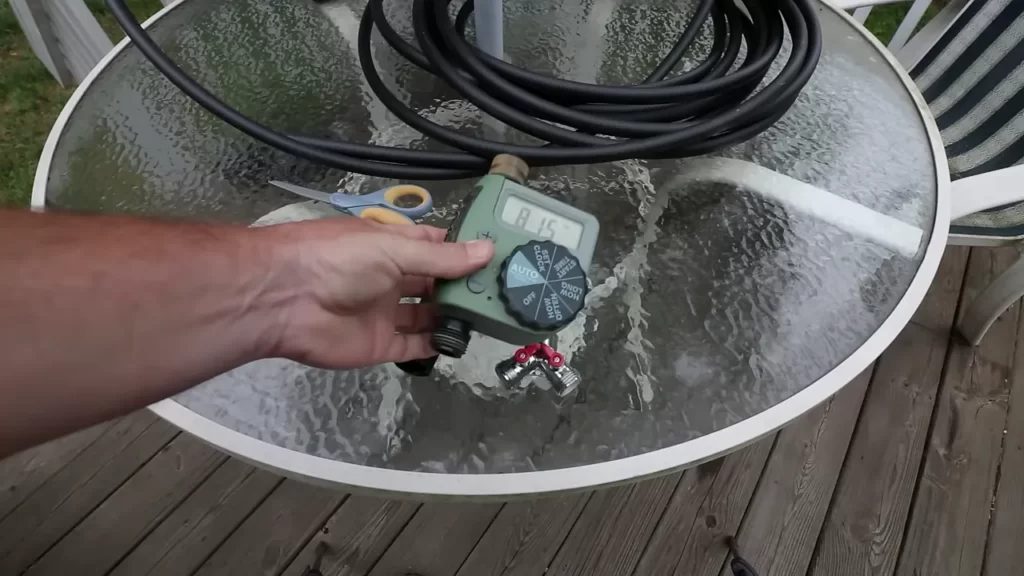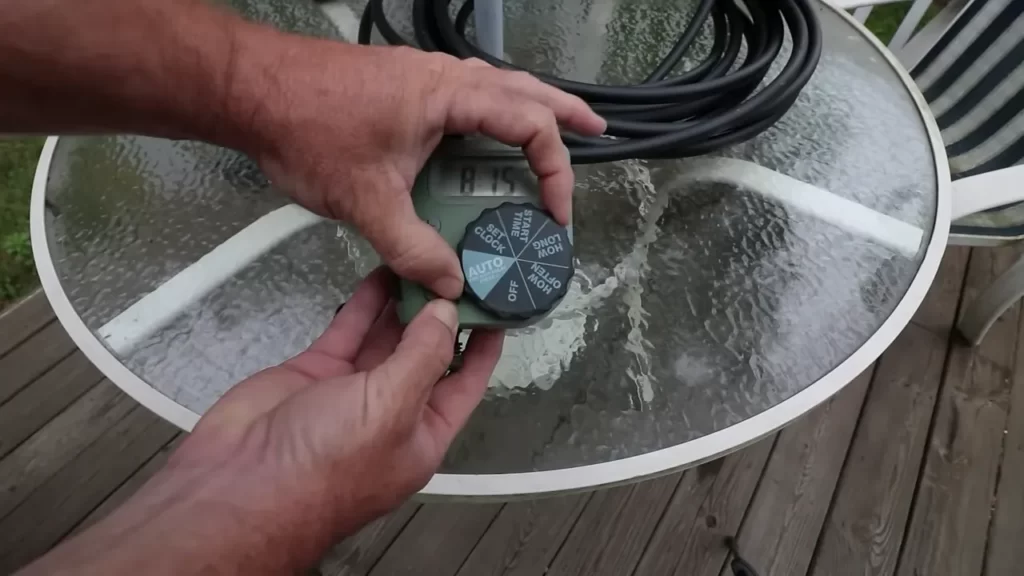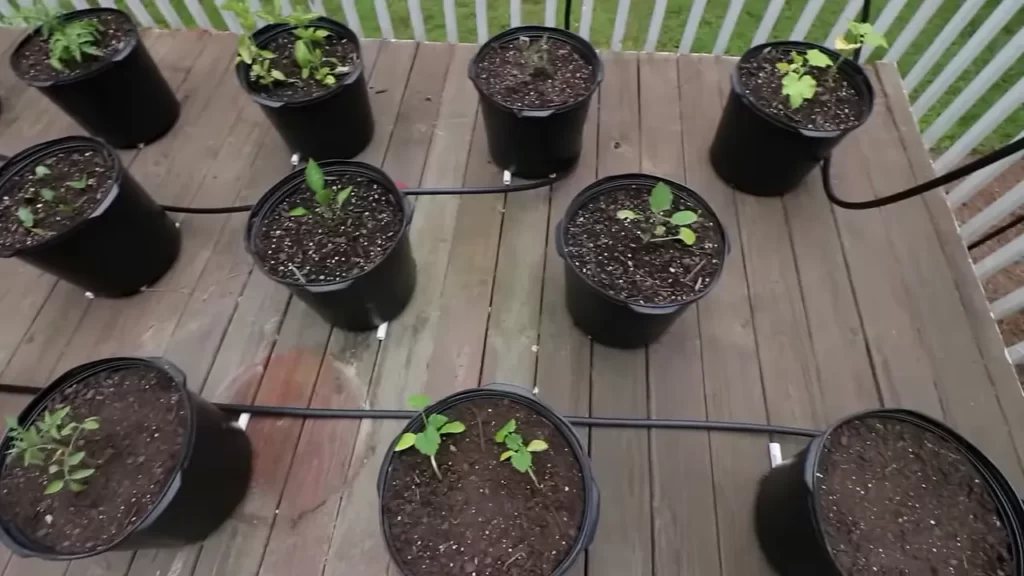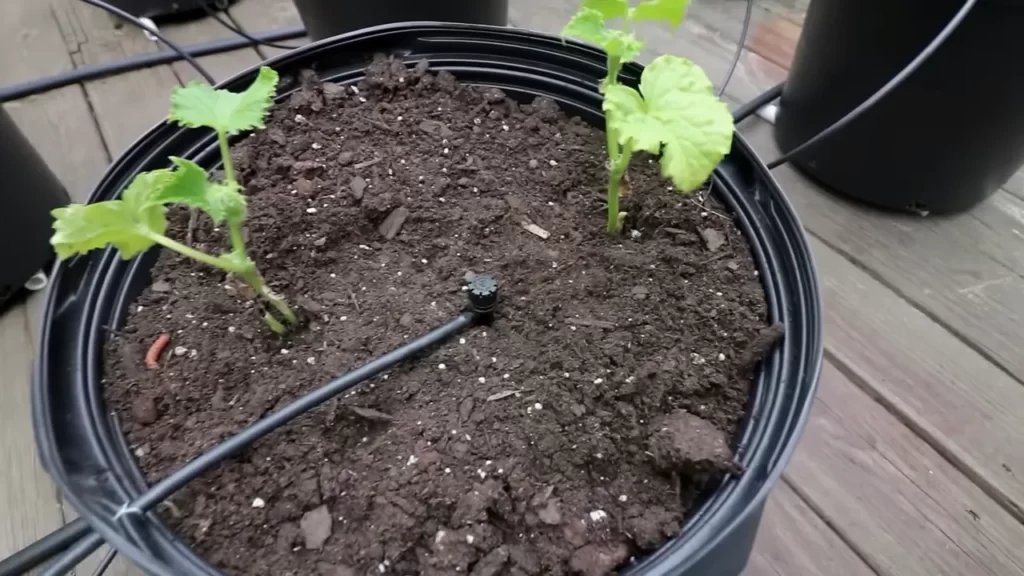To install a drip irrigation system for potted plants, follow these steps: prepare the materials and tools, create a plan for placing the tubing and emitters, assemble and connect the system, and test for proper operation. Drip irrigation systems are an efficient and convenient way to provide water to potted plants.
This method delivers water directly to the plant’s roots, minimizing water waste and reducing the risk of over- or under-watering. By following a few simple steps, you can easily install a drip irrigation system for your potted plants. We will guide you through the process, from preparing the materials to testing for proper operation.

So, let’s get started with the installation of your own drip irrigation system for potted plants.
Benefits Of Using A Drip Irrigation System For Potted Plants
Using a drip irrigation system for potted plants offers several benefits. Firstly, it saves water and reduces water wastage by delivering water directly to the roots of the plants. This efficient method of watering ensures that the plants receive the necessary moisture without any loss due to evaporation or runoff. Secondly, a drip irrigation system provides consistent and targeted watering. The slow release of water allows the soil to absorb it gradually, keeping it evenly moist without causing waterlogging. This is especially important for potted plants, as it helps prevent overwatering and underwatering. Overwatering can lead to root rot and other plant diseases, while underwatering can result in wilted and stressed plants. By providing a regular supply of water in small amounts, a drip irrigation system maintains optimum moisture levels for healthier potted plants.
Understanding The Essentials Of A Drip Irrigation System
html
A drip irrigation system is a highly efficient way to water potted plants, ensuring they receive a consistent and controlled water supply. To install a successful drip irrigation system, it’s important to understand its components, plan appropriately, and calculate the water requirements for your plants.
| Component | Description |
|---|---|
| Drip Emitters | Deliver water directly to the plant roots. |
| Tubing | Carries water from the water source to the emitters. |
| Connectors and Fittings | Join different sections of tubing and emitters together. |
| Backflow Preventer | Prevents water from flowing back into the water source. |
| Filter | Removes debris that could clog the system. |
| Pressure Regulator | Maintains a consistent water pressure. |
Before installing a drip irrigation system, it’s crucial to plan and design it

accordingly. Consider factors such as the layout of your potted plants, their water requirements, and the availability of a water source. Determine the placement of emitters to ensure they deliver water directly to the plant’s root zone. Additionally, calculate the required tubing length and estimate the water flow rate to ensure optimal irrigation.
Each potted plant has different water needs, so it’s essential to calculate the water requirements accurately. Factors like plant size, stage of growth, and environmental conditions influence the water demand. Measure the water requirements based on the plant’s evapotranspiration rate, which indicates how much water is lost through evaporation and plant transpiration. This calculation helps you determine the correct watering frequency and duration for your potted plants, ensuring they receive the right amount of water.
Step-by-step Guide To Installing A Drip Irrigation System For Potted Plants
html
Preparing the necessary tools and materials:
- Start by gathering the following tools and materials: drip tubing, connectors, emitters, watering stakes, main water source, scissors, and a timer (optional).
- Ensure that the potting area is clear and ready for installation.
Assessing your watering needs and setting up the system layout:

- Determine the number of plants you need to water and their specific needs.
- Plan the layout of your drip irrigation system accordingly, keeping in mind the proximity of the main water source to the pots.
Installing the main water source and connecting the drip tubing:
- Locate a nearby outdoor water faucet or install a separate water source.
- Connect the drip tubing to the main water source using the appropriate connectors.
Installing emitters and watering stakes for individual pots:
- Insert an emitter into the drip tubing near each pot, ensuring water flow will reach the plants effectively.
- Place watering stakes in the pots, connecting them to the drip tubing to provide direct watering to each plant.
Adjusting the system for optimal water flow and coverage:
- Turn on the main water source and adjust the water flow through the system.
- Check for any leaks or clogs and make necessary adjustments to ensure uniform water distribution.
Maintenance Tips To Ensure A Successful Drip Irrigation System
Maintenance Tips to Ensure a Successful Drip Irrigation System

Regularly inspecting and cleaning the system is essential to keep your drip irrigation system working efficiently. Over time, debris can accumulate in the system, causing clogs and reducing water flow. It is important to check the filters and remove any sediment or particles that may have accumulated. In addition, inspect the emitters to ensure they are not clogged or damaged. Clean or replace any clogged or damaged emitters to maintain proper water distribution.
To adjust the watering schedules for different plant needs, consider the specific requirements of each plant. Some plants may require more frequent watering while others may need less. By adjusting the irrigation system’s timer or controller, you can meet the individual needs of your potted plants.
When troubleshooting common issues and repairs, start by checking for leaks or blockages in the tubing. Inspect the connection points and ensure they are secure. If you encounter any issues, refer to the manufacturer’s instructions or consult a professional for guidance. Proper maintenance and prompt repairs will help keep your drip irrigation system running smoothly and ensure healthy, thriving potted plants.
Frequently Asked Questions Of How To Install A Drip Irrigation System For Potted Plants
Is Drip Irrigation Good For Potted Plants?
Yes, drip irrigation is beneficial for potted plants. It delivers water directly to the roots, preventing water wastage and promoting efficient plant growth.
What Size Drip Emitters To Use For Potted Plants?
For potted plants, use drip emitters with a size that matches the plant’s water needs. Consider factors like pot size, plant species, and environmental conditions. It’s best to consult a gardening expert for personalized recommendations. Remember to monitor the moisture levels regularly to ensure proper watering.
How Long To Water Potted Plants With Drip Irrigation?
Water potted plants with drip irrigation until the soil is evenly moist but not waterlogged. Monitor the moisture level regularly and adjust watering frequency or duration as needed. Avoid overwatering, as it can lead to root rot.
Conclusion
Installing a drip irrigation system for potted plants is a smart and efficient way of ensuring their proper hydration. By following the step-by-step guide provided in this blog post, you can save water, time, and effort while keeping your plants healthy and thriving.
With the convenience and benefits of a drip irrigation system, you can enjoy beautiful potted plants without any hassle. Start implementing these techniques and witness the transformation in your gardening experience. Happy planting!
